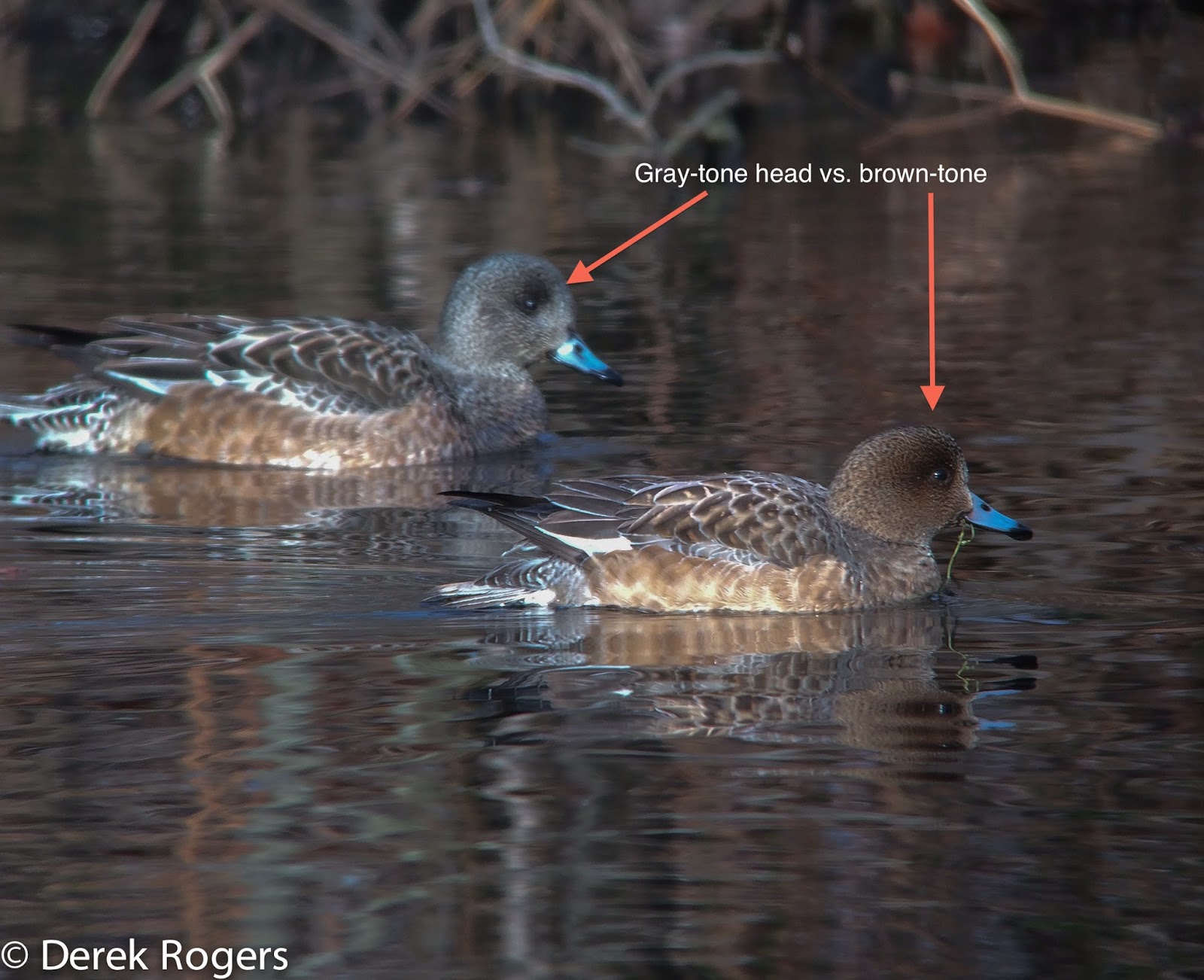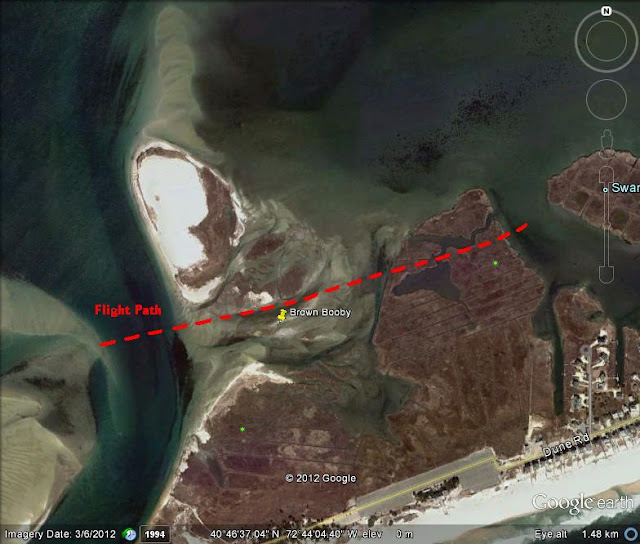Meopta Mud Hens - 30th Annual World Series of Birding Recap
 |
| Red-headed Woodpecker - iScoped with Meopta S2 Spotter and Meopix Adapter |
The Meopta Mud Hens consisted of 3 members. Chase Cammarota, James "the Godfather" Blumenstein, and myself, Derek Rogers. We were missing our 4th member this year, my brother, Chris Rogers. He was busy cheering us on and tending to his newborn daughter Braelyn Lily Rogers. Perhaps she'll be entering in the World Series of Birding in the near future. The Mud Hens chose to participate in the LGA category (Limited Geographic Area) as we have done in previous years. The LGA is fun, challenging, tiring and saves a bit of gas guzzling. We detail Cumberland County every year as the birds are plentiful and there is no shortage of habitat diversity. We like the amount of open space in this county and it really adds to the enjoyment of our travels. Last year we ended up finishing in 2nd place for the Cumberland County LGA with 136 species. There is a lot of solid competition in this County tournament and we're always up against some very sharp birders.
 |
| Yellow-breasted Chat - iScoped with Meopta S2 Spotter and Meopix Adapter |
Despite the apocalyptic, intermittent rain and thunderstorms 2013 was our best year yet. We finished up with 138 species overall (71%) of par for Cumberland County and just 5 birds (2%) fewer than the leading team putting the Mud Hens in the #2 spot for the Cumberland County race. Good scouting and some growing familiarity with the territory is starting to really pay off. Cumulatively, between scouting and the "big day" we birded for 43 total hours within Cumberland County starting around noon on Thursday, May 9, 2013 until we ended at about 11:00 PM on May 11th. It was a struggle to get passerines this year in the near constant pouring rain but we made the best of any and every break in the weather. On Friday, May 10th, while scouting Hansey Creek Road, we witnessed an epic fallout event. Warblers were strewn about all over the place calling, singing, and feeding. It was almost overwhelming, trying to pick apart each individuals song while simultaneously glassing each bird that flew across the road. Between a few locations, we had 26 warbler species in a little under 2 hours of birding. This activity did not continue into the "big day" but it was certainly a moment to remember. We ended with a total of 20 warbler species during the actual world series event, which was not bad considering the the weather and change in conditions. The most glaring warbler miss was Hooded Warbler, as we heard them in several locations during the days leading to the event. Not a single Hooded sang in any of our noted locations, after multiple visits during the day. Another glaring miss was Glossy Ibis. Last year we noted Glossy's all over the place. I didn't see a single Glossy Ibis in Cumberland County since Thursday afternoon. Perhaps we were just unlucky but I'm interested in finding out how other folks in the area fared with this species.
Here is the final checklist submitted by the Meopta Mud Hens at 11:20 PM on Saturday May 11, 2013. The following birds were seen and/or heard between 0200 hours and 2300 hours:
1) Canada Goose
2) Mute Swan
3) Wood Duck
4) American Black Duck
5) Mallard
6) Green-winged Teal
7) Lesser Scaup
8) Wild Turkey
9) Common Loon
10) Double-crested Cormorant
11) Great Blue Heron
12) Great Egret
13) Snowy Egret
14) Green Heron
15) Black-crowned Night Heron
16) Black Vulture
17) Turkey Vulture
18) Osprey
19) Bald Eagle
20) Northern Harrier
21) Red-tailed Hawk
22) Peregrine Falcon
23) Clapper Rail
24) Black-bellied Plover
25) Semipalmated Plover
26) Killdeer
27) Greater Yellowlegs
28) Willet
29) Lesser Yellowlegs
30) Solitary Sandpiper
31) Spotted Sandpiper
32) Ruddy Turnstone
33) Red Knot
34) Sanderling
35) Semipalmated Sandpiper
36) Least Sandpiper
37) White-rumped Sandpiper
38) Dunlin
39) Short-billed Dowitcher
40) Bonaparte's Gull
41) Laughing Gull
42) Ring-billed Gull
43) Herring Gull
44) Great Black-backed Gull
45) Least Tern
46) Forster's Tern
47) Black Skimmer
48) Mourning Dove
49) Rock Pigeon
50) Yellow-billed Cuckoo
51) Eastern Screech-Owl
52) Great-horned Owl
53) Barred Owl
54) Chuck-will's Widow
55) Eastern Whip-Poor-Will
56) Chimney Swift
57) Ruby-throated Hummingbird
58) Belted Kingfisher
59) Red-headed Woodpecker
60) Red-bellied Woodpecker
61) Downy Woodpecker
62) Hairy Woodpecker
63) Northern Flicker
64) Eastern Wood-Pewee
65) Eastern Phoebe
66) Great-crested Flycatcher
67) Eastern Kingbird
68) White-eyed Vireo
69) Yellow-throated Vireo
70) Red-eyed Vireo
71) Horned Lark
72) Purple Martin
73) Tree Swallow
74) Northern Rough-winged Swallow
75) Bank Swallow
76) Barn Swallow
77) Blue Jay
78) American Crow
79) Fish Crow
80) Carolina Chickadee
81) Tufted Titmouse
82) White-breasted Nuthatch
83) Carolina Wren
84) House Wren
85) Marsh Wren
86) Blue-grey Gnatcatcher
87) Eastern Bluebird
88) Veery
89) Grey-cheeked Thrush
90) Wood Thrush
91) American Robin
92) Gray Catbird
93) Northern Mockingbird
94) European Starling
95) Brown Thrasher
96) Blue-winged Warbler
97) Northern Parula
98) Yellow Warbler
99) Chestnut-sided Warbler
100) Magnolia Warbler
101) Black-throated Blue Warbler
102) Yellow-rumped Warbler
103) Black-throated Green Warbler
104) Yellow-throated Warbler
105) Pine Warbler
106) Prairie Warbler
107) Black and White Warbler
108) American Redstart
109) Prothonotary Warbler
110) Worm-eating Warbler
111) Ovenbird
112) Northern Waterthrush
113) Kentucky Warbler
114) Common Yellowthroat
115) Yellow-breasted Chat
116) Eastern Towhee
117) Chipping Sparrow
118) Field Sparrow
119) Grasshopper Sparrow
120) Saltmarsh Sparrow
121) Seaside Sparrow
122) Song Sparrow
123) White-throated Sparrow
124) Summer Tanager
125) Scarlet Tanager
126) Northern Cardinal
127) Rose-breasted Grosbeak
128) Blue Grosbeak
129) Indigo Bunting
130) Red-winged Blackbird
131) Boat-tailed Grackle
132) Common Grackle
133) Brown-headed Cowbird
134) Orchard Oriole
135) Baltimore Oriole
136) House Finch
137) American Goldfinch
138) House Sparrow
Again, it was a great honor to represent Meopta Sports Optics in this 2013 World Series of Birding. This was the 30th Anniversary of the event and thus far has raised close to $9,000,000 for bird and habitat conservation efforts.
The three photos in this blog post were captured during our scouting period on Friday, May 10th using my iPhone and a Meopix iScoping Adapter. Fasten this set up onto some good glass like, Meopta's Meostar S2 Spotting Scope, and you're in for some really nice photos and videos.
Finally, for those wondering what in the world a mud hen is. Mud Hen is the old hunters term for either rail or a coot, both of which live in marsh environments, hence the nickname "mud hen."
 |
| Short-billed Dowitcher - iScoped with Meostar S2 Spotting Scope & Meopix Adapter |



Comments
Post a Comment